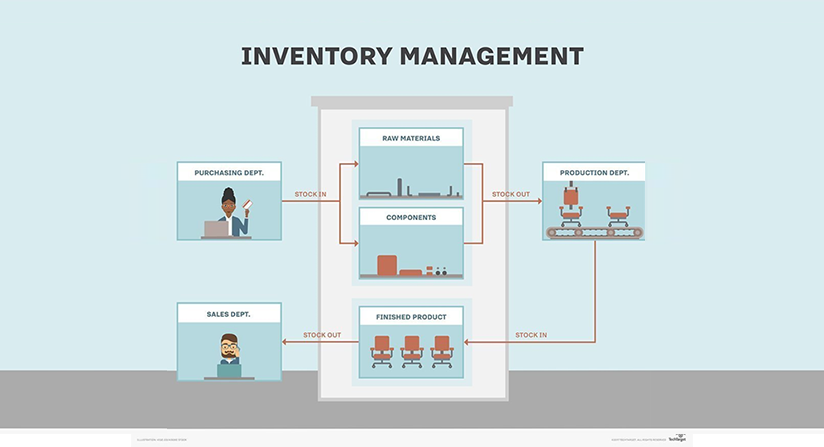What is Throughput?
Throughput is the time it takes for a product to pass through manufacturing processes on a machine-by-machine basis for a defined period. Throughput only includes fully completed work and none that is still in progress.
Throughput is an essential KPI, and a lean metric, as it evaluates performance. It is key to understanding how your manufacturing team is doing. Throughput provides insight into improvements you can make on your plant floor.
How Can You Increase Throughput?
Quick and efficient production is the goal of manufacturers. They need to keep up with customer demand and throughput is critical to accomplishing that.
If manufacturers don’t meet throughput goals, it can negatively affect production planning, inventory, and the supply chain. Efficient throughput improves sales opportunities, reduces resource waste, and increases customer satisfaction.
Below are seven essential steps for increasing manufacturing throughput.
1. Create a Workflow Map
Understanding what is happening with your workflow is key, and the best way to do that is to create a workflow map. A workflow map lets you visualize how labor, equipment, and processes coordinate. It helps you see more clearly how throughput is affected by workflow. A workflow map lets you visualize all the process steps and their logic and helps identify ways to streamline processes.

Workflow mapping helps manufacturers of all sizes understand and correct problems. It allows you to track manufacturing processes and find opportunities for improvement. It helps to uncover role responsibilities, determine the resources needed, and better understand how to achieve your goals.
When you see all actions in a workflow, you may find some that are unnecessary or that can be streamlined. Workflow maps can help you find workarounds to use as a standard practice. They help to visualize the steps before writing out the process for those steps. Workflow maps also support written documentation and Standard Operating Procedures (SOPs). Companies frequently use workflow mapping to document process examples for ISO certifications. Here’s more information on how to develop a workflow map.
2. Remove Bottlenecks
Once workflow mapping is complete, it is easier to see where any bottlenecks occur. Maybe you put in new equipment but never updated the process to work effectively with it. Perhaps there are lots of workarounds that aren’t appropriate anymore. Or maybe you need more workstations to streamline a process.
You may find that a bottleneck results from workers not using machines effectively. Do your operators have a good understanding of how to use the machines? If not, it could cause increased wear and tear on machines and bottlenecks from more maintenance. Maybe your machines need operational adjustments for a more efficient process.
Some common bottlenecks are:
- Unclear processes, inefficient or outdated workflows
- Not enough people or machines to produce effectively
- Lack of machine(s) capacity to meet demand
- Need for modern equipment/automation
- Inefficient forecasting of demand or materials needed
Talk to workers on the plant floor who may already know why bottlenecks are occurring. Remove problems in your throughput to stay profitable and competitive.
3. Minimize Equipment Downtime
A major problem for manufacturers is equipment downtime. It is costly and can frustrate workers. Keep your machines on an efficient maintenance schedule to avoid unplanned downtime. Small manufacturers may keep track of maintenance on paper. As a business grows, there needs to be a better way.
With new technology, there are ways to have alerts, reminders, and notifications sent in real-time to keep you updated on machinery maintenance needs. It’s better to have advanced knowledge of machinery maintenance needs to avoid a breakdown during a large production run. Include maintenance in your production plan to have a minimum impact on the number of goods manufactured. Unexpected equipment breakdowns are expensive, irritating, and may cause delivery delays. There will always be unexpected circumstances, but keeping on top of maintenance can significantly help throughput.
Equipment operators should have thorough training on how to use the machines to avoid problems and to understand when they need maintenance. They should also know best practices that will keep the equipment in good working order and workflow streamlined.
4. Reduce Rejected Parts
Rejected parts can come from faulty material delivery or errors in production. Manufacturers should monitor production closely to spot quickly parts that need to be rejected. By catching them fast, you can keep scrap to a minimum. Workflow maps help you determine where you need quality control checkpoints to notice faulty parts. It’s critical to keep the amount of rejected parts low to avoid rework.
A high production output rate isn’t good if a large percentage is being scrapped. Watch for places where parts could get damaged or that could cause them to not meet tolerance levels.
Rejected parts can also result from design and drawing errors. Accurate designs are important for production. Many manufacturers use gauges to ensure they correctly produce parts to achieve tolerance levels. Also, to reduce rejected parts, manufacturers need to use suitable material quality levels.
5. Improve Training
Manufacturers can avoid many issues if they train workers correctly. Training keeps machine operators safer, reduces machine downtime, improves production efficiency, and minimizes rejected parts. Improved training increases throughput, and both customer and employee satisfaction.
Managers must listen to trained staff when they communicate ideas. Working on the front lines, production staff are in the best position to notice problems and provide solutions. It’s essential to communicate with then regularly regarding their observations.
6. Efficient Use of Labor
Studies have shown that staff working in a dedicated production area will perform better and faster. They can set up more efficiently, reduce change-over times, better understand workflow, and perform quality inspections. Workers dedicated to an area of a production line are more likely to take ownership of it.
Manufacturing staff who work in a specific area need less training to get up to speed. However, it is important to keep educating staff so they can train others and add more value to the company. Try to hire people who can help you see things from a new perspective.
7. Implement Automation
Automated machinery cuts production time and helps manufacturers meet tight tolerances. It also frees staff to be used elsewhere, reduces the risk of employee injury, and improves consistency.
Manufacturing machines allow you to conduct operations with greater precision and for longer periods. When manufacturers add automation, staff can get away from tedious tasks and take on higher-level activities. Automated machinery increases throughput because it can perform faster and more precisely on repetitive tasks.
Automation precision improves quality and lowers operating costs while using less labor and having greater productivity. Manufacturers can reposition and reprogram machines for the flexibility of changing production needs. Automation reduces lead times through faster and greater control. Automation increases manufacturers’ sales opportunities by producing a higher volume of goods and improving their bottom line.
Conclusion
Throughput is a key component of manufacturing, and manufacturers should monitor it closely. It becomes more challenging to track throughput as a company expands and has more machinery, workstations, processes, and staff.
To learn more about increasing manufacturing throughput, contact us.
Follow Us










